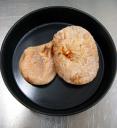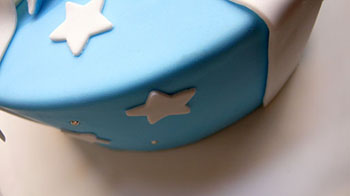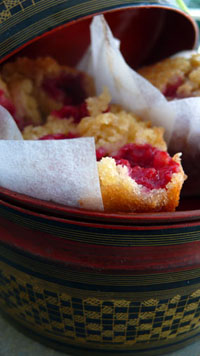White Fig and Pecan Bread
My contribution for this week’s round of WHB, hosted by Anna of Anna’s Cool Finds isn’t a herb, but a rather unexpected type of dried flower.
Surprised? Well, the picture above wouldn’t remind me of any sort of flower, and it is in actual fact, two dried white figs. Figs, often thought of as fruit, are botanically speaking, the fig tree’s flowers and seeds; something along the lines of an inverted flower, growing as a single mass. These false fruits are high in fibre and antioxidants, and also high in sugar. Fresh or dried, the figs I’m used to buying, are the darker coloured varieties, such as the Black Mission fig, so I was quite surprised to come across a packet of large dried white figs. The dried Iranian baby figs are the only other white fig I’ve tasted, and even then, those were very small (and cute!) and mild in flavour. I used the white figs in a dense crumbed, fruit and nut studded bread I made last week. The original recipe by Rose Levy Berenbaum is provided below. I’ve now made this several times, substituting the almonds with pecans, and using walnut oil instead of plain oil, the last time round. The pecans, which are darker in colour than the almonds, leave a lovely visible swirly pattern inside the bread. Thin slices of this bread are excellent with cheese. Rose recommends blue cheese, but I also like it with a crumbly cheddar.
New Zealand Almond and Fig Bread :
Dough Starter (Sponge)
117g bread flour
1/2 teaspoon instant yeast
3/4 teaspoon sugar
177g water at room temperature
1. In a mixer bowl, place the flour, yeast, sugar and water. Whisk until very smooth, to incorporate air, about 2 minutes. The sponge will be the consistency of a thick batter. Scrape down the sides of the bowl. Set it aside, covered with plastic wrap, while you make the flour mixture.
Flour Mixture
117g bread flour
72g whole wheat flour
1/2 teaspoon instant yeast
2 teaspoons oil
1 1/4 teaspoon salt
75g unblanched slivered almonds
75g dried Mission figs, stems removed, cut into 1/4- to 1/2- inch pieces.
(plus 1 whole fig for decor – I didn’t use this as fresh figs aren’t in season at the moment)
2. Whisk together the bread flour, whole wheat flour, and yeast. Sprinkle this on top of the sponge and cover it tightly with plastic wrap. Allow it to ferment for 1 to 4 hours at room temperature. (During this time the sponge will bubble through the flour mixture in places; this is fine)
3. Add the oil to the dough and mix with the dough hook on low speed until the flour is moistened enough to form a rough dough. Scrape down any bits of dough. Cover the bowl with plastic wrap and allow the dough to rest for 20 minutes.
Sprinkle on the salt and knead the dough on medium speed for 7 minutes. It will be smooth and shiny and cling slightly to your fingers. If it is not at all sticky, spray it with a little water and knead it in. (It will weigh about 490g). Allow the dough to rest for 10 minutes.
Turn the dough out onto a lightly floured counter and roll it into a rectangle about 9×14 inches. Sprinkle with the almonds and cut-up figs. Roll up the dough and knead it for a few minutes to incorporate the almonds and figs evenly. Shape it into a ball.
4. Set the dough into a bowl, lightly greased with cooking spray or oil. Press down the dough and lightly spray or oil the top. Cover the container with a lid or plastic wrap. Allow the dough to rise until doubled, about 1 1/2 hours.
Scrape the dough out onto a floured counter, and press down on it gently to form a rectangle. Fold the dough into a tight package or give it 2 business letter turns, and set it back in the container. Oil the surface again, cover. Allow the dough to rise until doubled, about 1 hour.
Almonds and Apricot Glaze
75g sliced almonds
50g apricot jelly
30g water
5. Turn the dough out onto a lightly floured counter and press down on it gently to flatten it slight. Round the dough into a 4 1/2 inch ball and lightly spray the surface with water. Scatter the almonds on a counter. Roll the ball of dough in the almonds to cover it completely, pressing the nuts into the dough. Firmly push the whole fig (if using), pointed end down, into the center so that it is submerged as deeply as possible into the dough. The loaf will measure 5 inches by 2 1/2 inches high.
Place it on a baking sheet. Cover with a large container. Let the dough rise until doubled, about 1 hour to 1 hour 15 minutes. It will be about 5 1/2 inches by 3 inches high, and when it is pressed gently with a fingertip, the depression will very slowly fill in.
6. Preheat the oven to 215’C 1 hour before baking. Have an oven shelf at the lowest level and place an oven stone or baking sheet on before preheating.
7. Gently set the baking sheet on the hot stone or baking sheet. Bake for 5 minutes. Lower the temperature to 185’C and continue baking for 35 to 40 minutes or until the bread is golden brown and a skewer inserted into the middle comes out clean.
8. Meanwhile in a small saucepan, mix the apricot jelly and water together. Bring to a boil and simmer for 1 to 2 minutes, stirring constantly. When the bread is done, remove it from the oven and brush it with the hot apricot glaze. Return it to the oven for 1 minute to set the glaze. Remove the bread from the oven and transfer it to a wire rack to cool completely.












